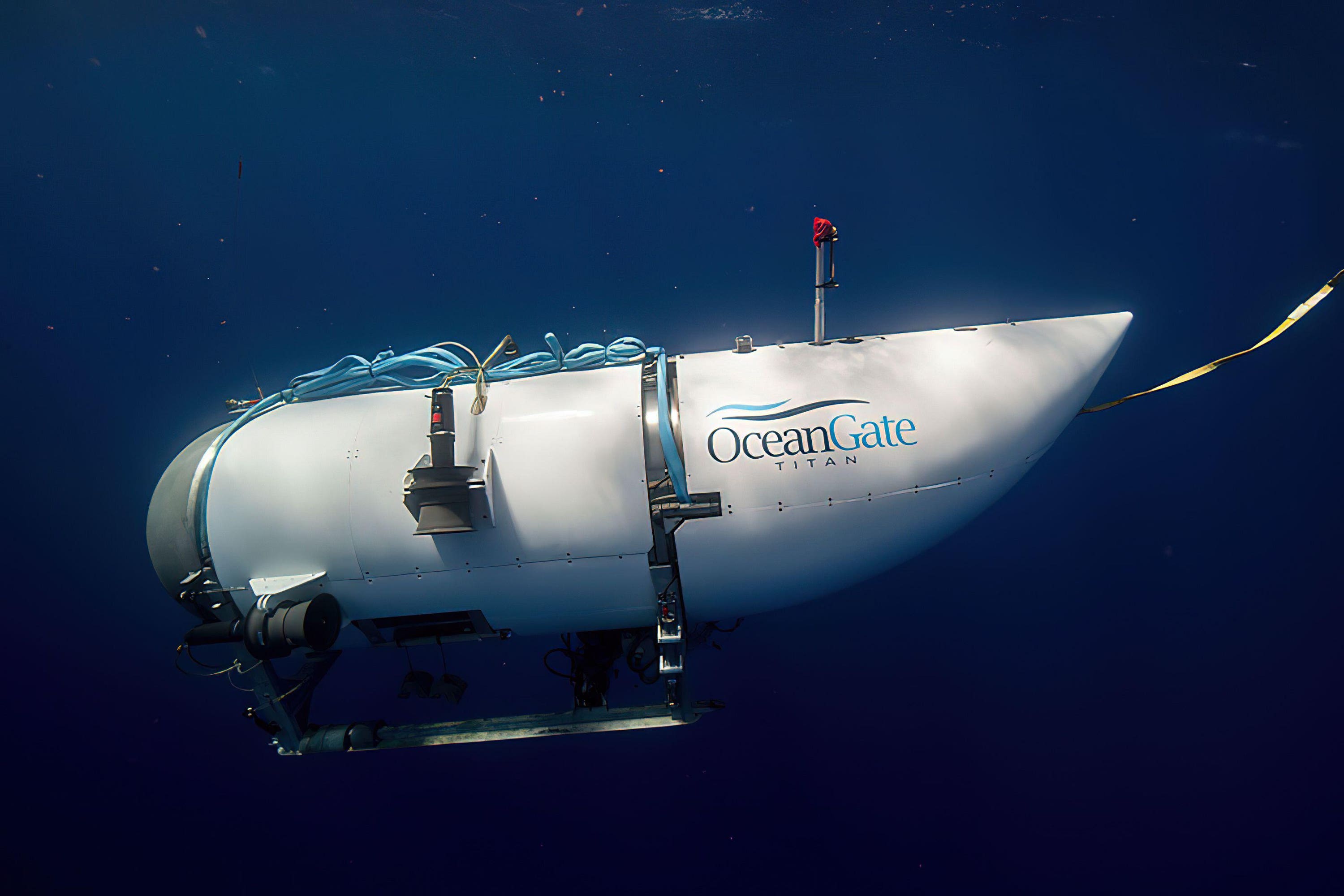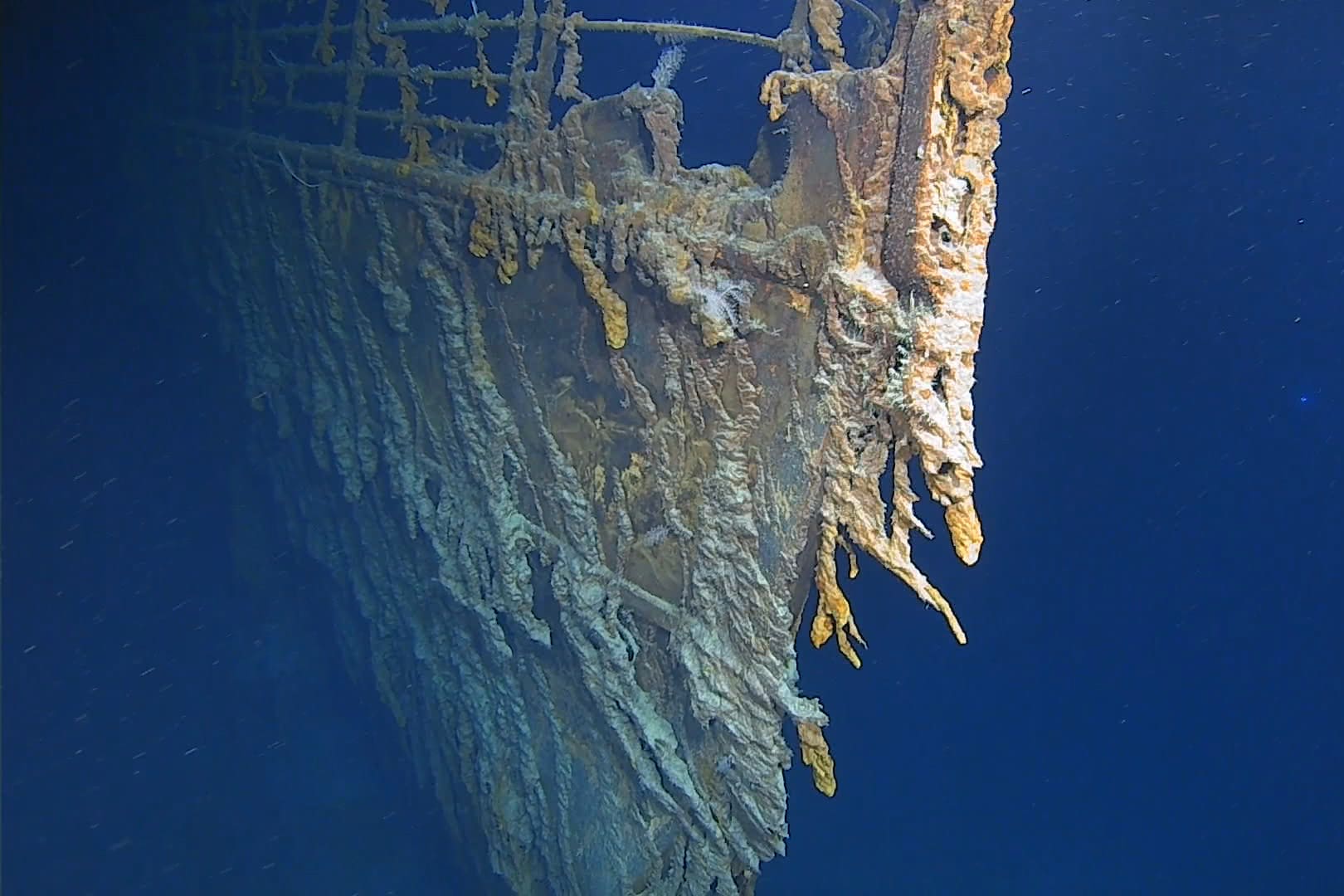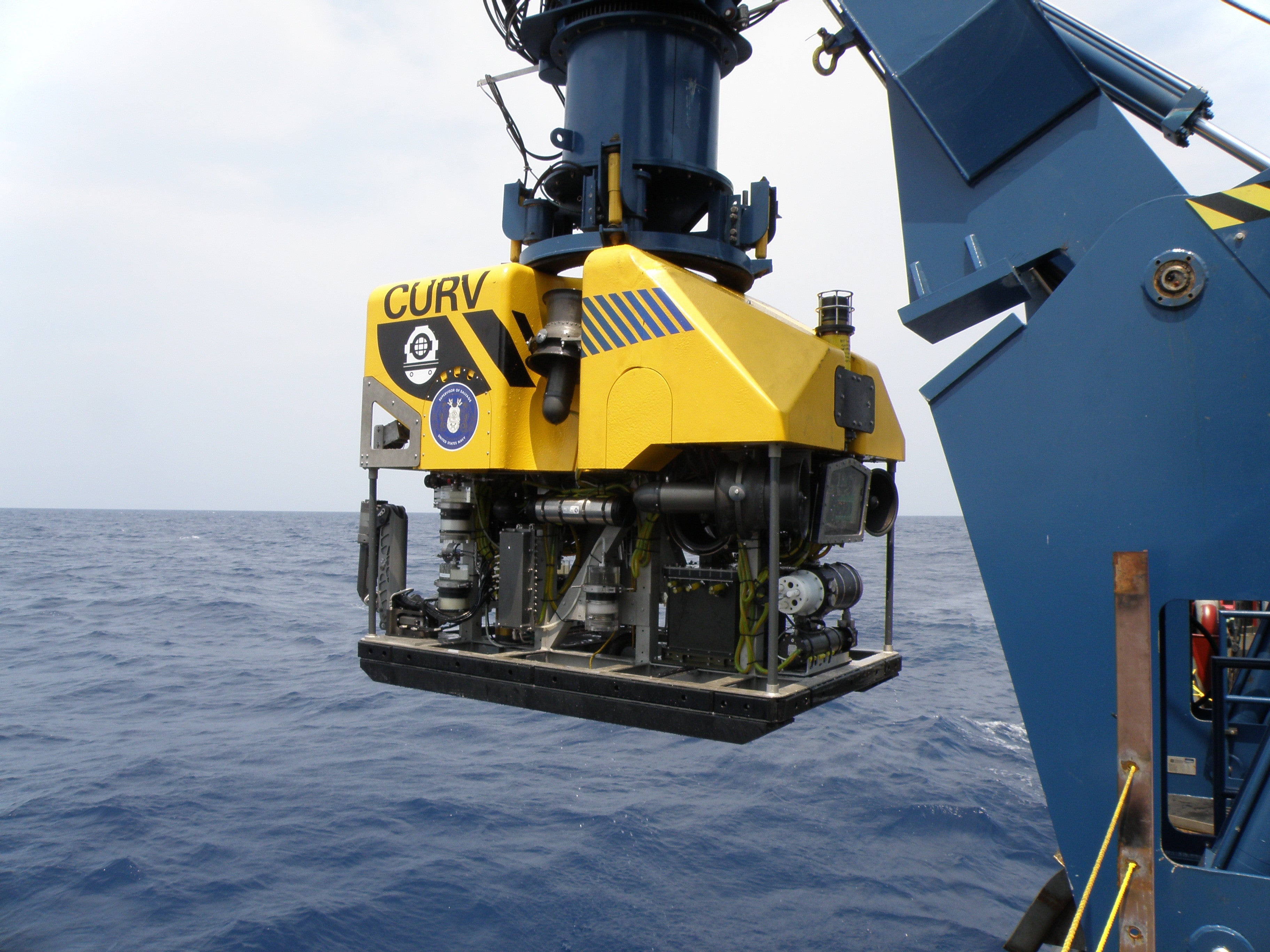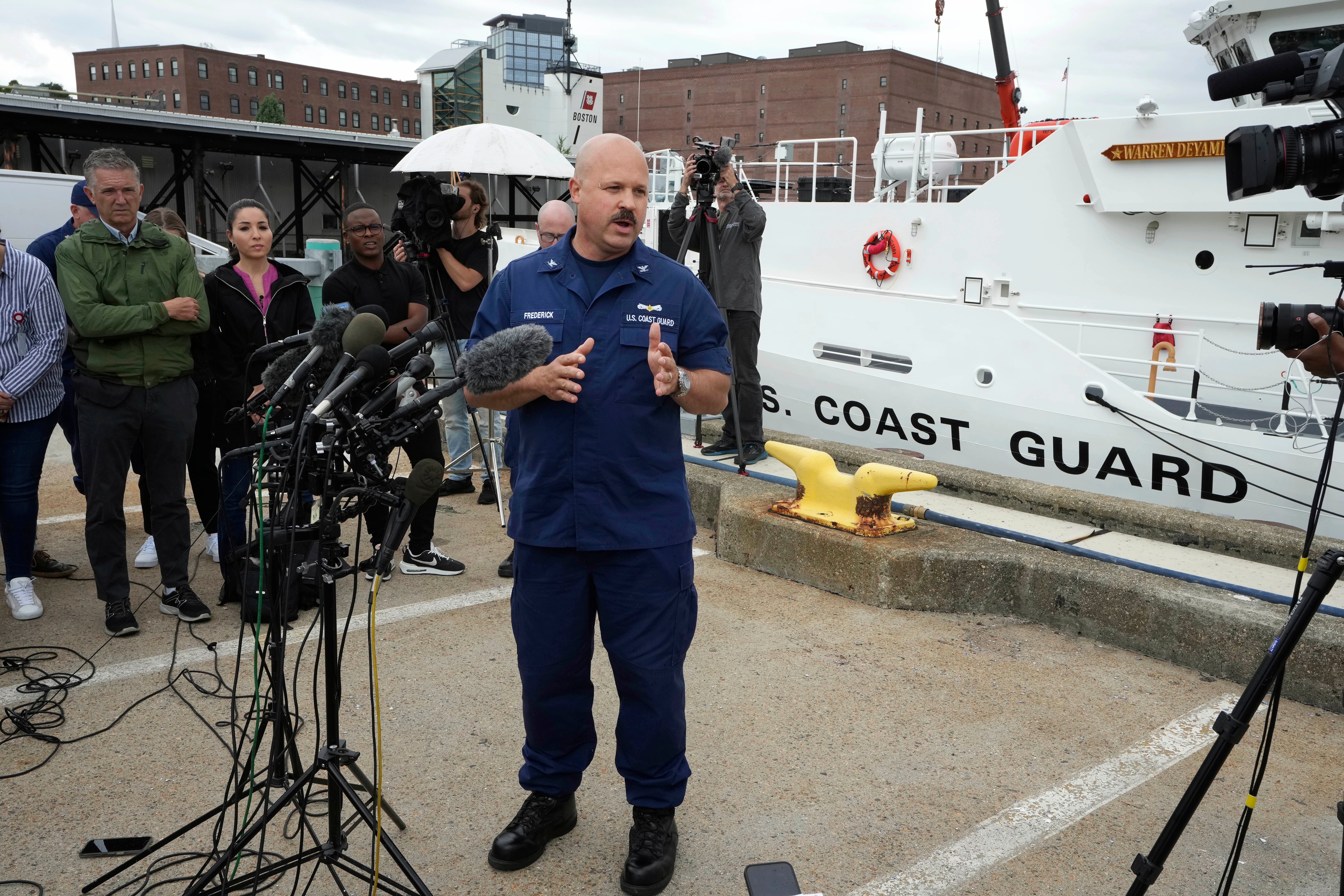Missing Titanic submarine: Timeline of how the deep-sea tragedy unfolded
Five crew members died when the Titan submarine suffered a ‘catastrophic explosion’ - this is how it all unfolded
Your support helps us to tell the story
From reproductive rights to climate change to Big Tech, The Independent is on the ground when the story is developing. Whether it's investigating the financials of Elon Musk's pro-Trump PAC or producing our latest documentary, 'The A Word', which shines a light on the American women fighting for reproductive rights, we know how important it is to parse out the facts from the messaging.
At such a critical moment in US history, we need reporters on the ground. Your donation allows us to keep sending journalists to speak to both sides of the story.
The Independent is trusted by Americans across the entire political spectrum. And unlike many other quality news outlets, we choose not to lock Americans out of our reporting and analysis with paywalls. We believe quality journalism should be available to everyone, paid for by those who can afford it.
Your support makes all the difference.One the night of Saturday 17 June, billionaire explorer Hamish Harding took to Instagram to reveal he was among the crew of a submersible vessel on their way to explore the Titanic wreckage.
“I am proud to finally announce that I joined OceanGate Expeditions for their RMS TITANIC Mission as a mission specialist on the sub going down to the Titanic,” Mr Harding wrote.
“Due to the worst winter in Newfoundland in 40 years, this mission is likely to be the first and only manned mission to the Titanic in 2023. A weather window has just opened up and we are going to attempt a dive tomorrow.”
Mr Harding said the five-member crew, which included French diver Paul-Henri Nargeolet, Pakistani businessman Shahzada Dawood and his son Suleman Dawood, had set sail from St Johns, Newfoundland, Canada, on Friday.
They were planning to start their 4,000m descent to the most famous shipwreck in the world at 4am on Sunday morning. “Until then we have a lot of preparations and briefings to do,” he said.
About 105 minutes into the trip, the Tital submersible stopped communicating with its mothership.
But just five days later, it would be confirmed that the submarine suffered a “catastrophic implosion” and all five people on board were confirmed to have died.

Here’s a timeline of the horror ordeal:
Sunday (18 June)
The Polar Prince icebreaker sailed around 900 miles off the coast of Newfoundland, where it set anchor.
The five-person crew was dropped into the ocean in their 22-foot long submersible vessel, the Titan, around 8am EST the submersible was launched, according to the US Coast Guard
One hour and 45 minutes later, the vessel lost contact with the Polar Prince.
The vessel was programmed to send out a “ping” every 15 minutes to indicate its location. The final signal was sent at around 10am ET, according to The Times.
The Titan typically takes around two hours to reach the Titanic wreckage, located about 4,000m beneath the ocean.

According to the Coast Guard, the sub was meant to surface at 3pm EST.
When it failed to resurface, the crew raised the alarm with authorities at 5.40pm EST.
At a press conference in Boston, Captain Jamie Frederick, of the US Coast Guard, said: “On Sunday, the co-ordination command centre in Boston received a report from the Canadian expedition vessel Polar Prince of an overdue 21 foot submarine, Titan, with five people on board.
“The Titan was attempting to dive on the wreck of the Titanic, approximately 900 miles east of Cape Cod and 400 miles south of St John’s, Newfoundland.
“Approximately one hour and 45 minutes into the scheduled dive, the Polar Prince lost all communication with the Titan, Polar Prince conducted an initial search and then requested Coast Guard assistance. The US Coast Guard in Boston assumed the responsibility of search-and-rescue mission coordinator and immediately launched search assets.
“Since Sunday, the Coast Guard has coordinated search efforts with the US and Canadian Coast Guard, Air National Guard aircraft and the Polar Prince (the Titan’s mother ship), which has searched a combined 7,600 square miles, an area larger than the state of Connecticut.”
The vessel was carrying enough oxygen for the crew for 96 hours — making the rescue mission a race against time to reach the vessel.

Monday (19 June)
On Monday morning, authorities revealed the Titan was missing and a large-scale search operation had been launched.
The US Coast Guard revealed they had begun a sweeping search of a 5,000sqm area about 900 miles off the coast of Cape Cod, Massachusetts. The Canadian Coast Guard said it too is taking part in the effort with fixed-wing aircraft and a ship.
At 1.30pm, the US Coastguard’s Northeast tweeted that a C-130 Hercules reconnaissance aircraft had been dispatched to search for the Titan.
P8 Poseidon aircraft with underwater sonar capabilities joined the search on Monday afternoon.

“It is a remote area and it is a challenge to conduct a search in that remote area but we are deploying all available assets to make sure we can locate the craft and rescue the people onboard,” US Coast Guard Rear Admiral John Mauger told reporters during a briefing at 4.30pm EST on Monday.
Submersible craft including an unmanned US Navy Curv-21, which can reach a depth of 4,000m, also joined the search.
The Polar Prince and 106 Rescue Wing continued to conduct surface searches throughout Monday evening.
Tuesday (20 June)
On Tuesday afternoon, OceanGate confirmed that its chief executive and founder Stockton Rush is “aboard the submersible as a member of the crew”.
A Canadian Aircraft P3 Aurora joined the effort, as the search area expanded to 10,000sqm.
During the press conference on Tuesday, Captain Frederick said there were around 40 to 41 hours of oxygen left on the submersible.
He said that a “unified command” of multiple agencies had been formed to tackle the “very complex problem” of finding the vessel but so far this had “not yielded any results”.
Captain Frederick said: “Since Sunday, the Coast Guard has coordinated search efforts with the US and Canadian Coast Guard, Air National Guard aircraft and the Polar Prince (the Titan’s mother ship), which has searched a combined 7,600 square miles, an area larger than the state of Connecticut.
“These search efforts have focused on both surface, with C-130 aircraft searching by sight and with radar, and subsurface, with P-3 aircraft we’re able to drop and monitor sonar buoys.

“To date, those search efforts have not yielded any results.”
Captain Frederick was non-committal however when asked if there is any way to retrieve the submersible and save the five on board if it can be located.
“So, right now all of our efforts are focused on finding the sub,” he said.
“What I will tell you is we have a group of our nation’s best experts in the unified command and if we get to that point, those experts will be looking at what the next course of action is.”
It is understood the King was being kept informed of the search efforts, as Shahzada Dawood was a long-time supporter of The Prince’s Trust International and The British Asian Trust, both of which are charities founded by Charles
It was also reported that a Canadian aircraft had detected “banging” noises within the search area over the course of 30-minute intervals.
Wednesday (21 June)
According to internal e-mail updates sent to Department of Homeland Security leadership, the Canadian aircraft detected “banging” noises every 30 minutes.
“RCC Halifax launched a P8, Poseidon, which has underwater detection capabilities from the air,” the e-mails read.

“The P8 deployed sonobuoys, which reported a contact in a position close to the distress position. The P8 heard banging sounds in the area every 30 minutes. Four hours later additional sonar was deployed and banging was still heard.”
The US Coast Guard on Wednesday morning said: “Canadian P-3 aircraft detected underwater noises in the search area. As a result, ROV (remote operating vehicles) operations were relocated in an attempt to explore the origin of the noises.
“Those ROV searches have yielded negative results but continue.
“Additionally, the data from the P-3 aircraft has been shared with our U.S. Navy experts for further analysis which will be considered in future search plans.”
In an upbeat statement, President Richard Garriot de Cayeux of The Explorers’ Club said: “There is cause for hope, that based on data from the field, we understand that likely signs of life have been detected at the site.
“They precisely understand the experienced personnel and tech we can help deploy… We believe they are doing everything possible with all the resources they have.”
Mr Garriot de Cayeux said they were ready to provide the UK-based Magellan’s remotely operated vehicle (ROV) that is certified to travel as deep as 6,000 metres.
In a press conference on Wednesday (21 June) afternoon, Captain Jamie Frederick of the US Coast Guard assured people that authorities were doing everything possible to locate the missing vessel as the search intensified with more technology.
Mr Frederick confirmed that the vessel had less than 24 hours of oxygen supply left. He also acknowledged that officials do not know if crews will be able to rescue the people on board even if they do manage to find the sub before the oxygen runs out.
The first photo emerged of the Deep Energy rescue ship, which carries two remote-operated vehicles (ROVs) capable of operating to a depth of 3,000m, arriving at the search site on Wednesday. The John Cabot, which has “side-scanning sonar capabilities”, the Skandi Vinland and the Atlantic Merlin also arrived at the search site on Wednesday morning, the US Coast Guard said in a Twitter post.
The Royal Canadian Navy also deployed HMCS Glace Bay, which carries a medical team specialising in dive medicine. Onboard the ship is a six-person mobile hyperbaric recompression chamber that can be used to treat or prevent decompression sickness.
However, the French ship Atalante carrying the Victor 6,000 underwater (ROV) and winch — the only one capable of reaching the Titanic wreck 4,000m under the ocean surface — had a narrow window of time to conduct rescue operations as it only reached the search site on Wednesday night.
Thursday (22 June)
The air supply on the missing Titanic tourist submarine came down to its last hours, as rescue workers continued their increasingly desperate search for the five stranded passengers.
A US Coast Guard spokesperson told The Independent they expect the vessel, named Titan, would run out of oxygen at 8am EDT, which is 1pm UK time, on Thursday. This estimated time is based on the number of hours of oxygen the craft had for the five people on board - 96 - and the time it submerged - 8am EDT, which is 1pm UK time, on Sunday.
Soon after that deadline passed, officials announced a “debris field” had been found in the search area.
Five crew members were later confirmed to have died after the Titanic tourist submarine suffered a “catastrophic explosion”.
The US Coast Guard offered its “deepest condolences” to the families after the tail cone of the vessel was found around 1,600ft from the bow of the Titanic wreck.
In a press conference, Rear Admiral John Mauger said further debris was “consistent with a catastrophic loss of the pressure chamber”.
In a statement, OceanGate Expeditions said: “These men were true explorers who shared a distinct spirit of adventure, and a deep passion for exploring and protecting the world’s oceans.
“Our hearts are with these five souls and every member of their families during this tragic time.
“We grieve the loss of life and joy they brought to everyone they knew.”
Asked what the prospects of recovering crew members were, Rear Admiral Mauger said: “This is an incredibly unforgiving environment down there on the sea floor and the debris is consistent with a catastrophic implosion of the vessel.
“And so we’ll continue to work and continue to search the area down there, but I don’t have an answer for prospects at this time.”
Rear Admiral Mauger also said there did not appear to be any connection between the underwater noises detected during the search and rescue mission and the location of the debris on the seafloor.
“This was a catastrophic implosion of the vessel which would have generated a significant broadband sound down there that the sonar buoys would have picked up,” he said.
28 June
The search for what remains of the Titan submersible and its passengers concluded, as human remains were found on the sea floor and debris from the vessel returned to dry land in Canada.
Large pieces of wreckage from the Titan was seen being transported to St John’s harbour in Newfoundland on Wednesday by the Horizon Arctic ship, where they were unloaded by a crane.
The Coast Guard announced just hours later that “presumed human remains” had been found on the sea floor. They will now be formally analysed.
While the search has ended, investigations will continue for some time into what caused the “catastrophic implosion” of the sub, killing all five passengers on board.




Join our commenting forum
Join thought-provoking conversations, follow other Independent readers and see their replies
Comments